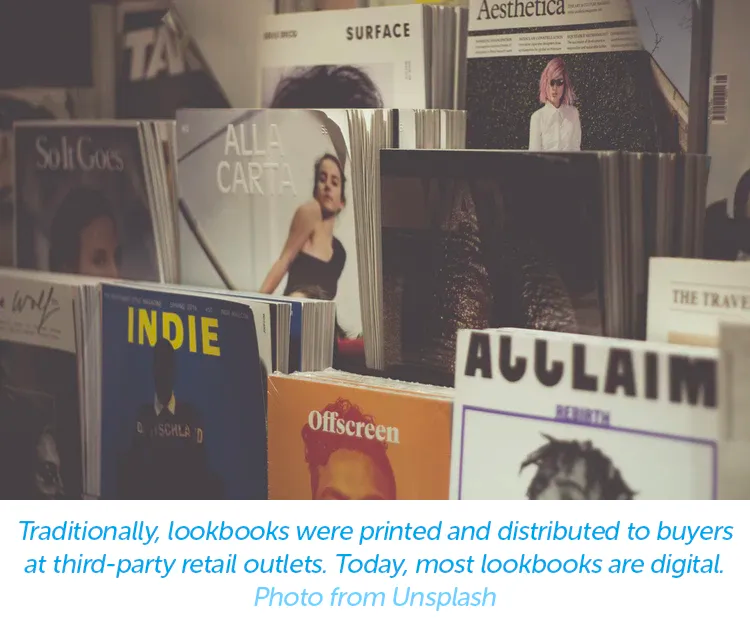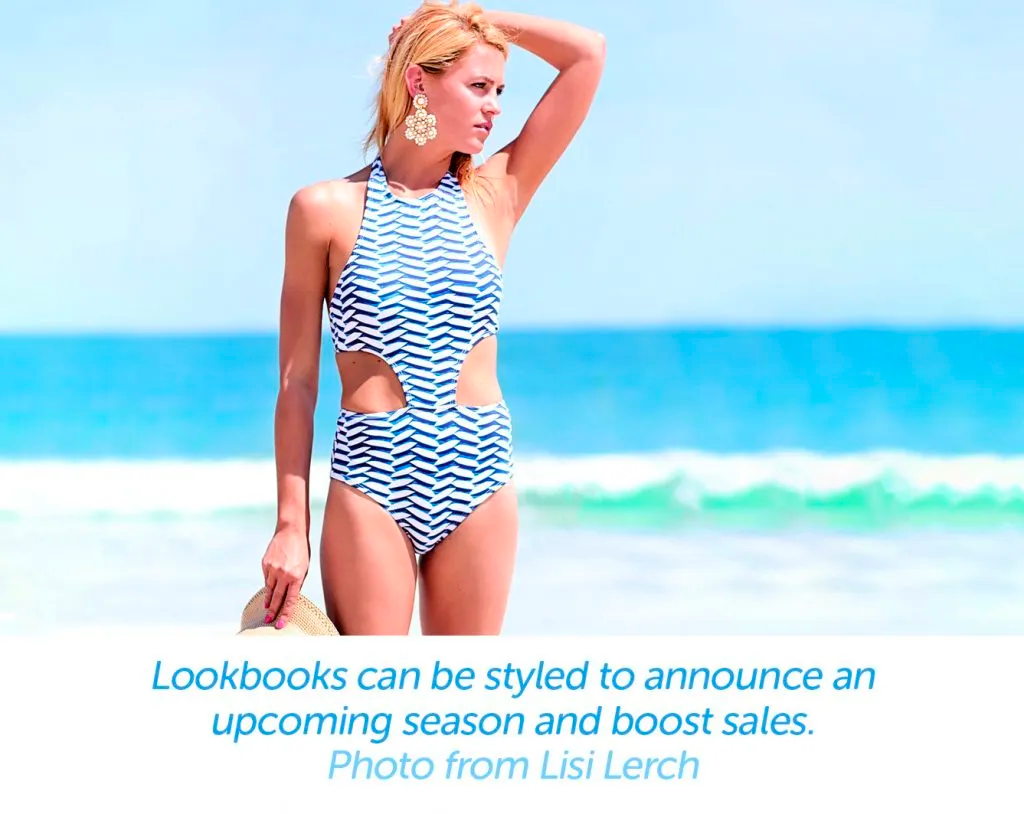Growth is on the horizon for ecommerce fashion and accessories: data shows the industry is expected to continue to increase sales steadily.
But with that growth comes steeper competition which can make it more challenging for new ecommerce fashion brands to succeed.
As buying fashion online becomes more popular, consumers have started to demand more personalization. Over half of consumers now expect personalized experiences while shopping online or want to at least be shown products that are highly relevant to their individual interests. Most of the time this happens with help from marketing automation software or ecommerce tools that aid in delivering personalization.
However, if you’re not ready to introduce fancy tools and plugins for personalization (or you’re looking for something to run in tandem with them), one way you can make your brand feel more personalized is by zeroing in on a specific consumer identity — one that goes beyond mere gender and age.
Fashion lookbooks are one of the most effective marketing tools when it comes to conveying a specific consumer identity.
In this post, we’ll get into the basics of what a lookbook is and how creating one can help drive sales.

What Is a Lookbook?
Before the digital age, lookbooks used to be physical books that fashion brands would have printed to showcase their latest collections. Think of the original lookbooks like small print fashion magazines for a specific brand minus the editorials.
Today, most lookbooks are digital and live on a brand’s website. Some are designed like traditional lookbooks with slides of images that can be digitally “flipped through.” Others are more creative or interactive.
The purpose of a lookbook is to convey a brand or designer’s latest collection in a flattering, marketable light. For traditional fashion companies, the lookbook would be given to buyers of major fashion retailers to (hopefully) impress them enough to carry the new line.
Now that the fashion world has embraced direct-to-consumer ecommerce, there’s not as much need to distribute lookbooks to third-party retailers. Instead, many smart ecommerce brands are using lookbooks to appeal directly to customers through their website, mobile app, social media, and/or email marketing.
How Can a Lookbook Drive Ecommerce Sales?
Lookbooks offer stylized photography and branded graphic design that can be an important supplement to regular product images — drumming up renewed interest in your store and deepening consumer loyalty.
Let’s look at five specific ways lookbooks can drive ecommerce sales.
1. Lookbooks Help You Tell a Better Story About Your Brand
The reason that certain websites stand out in the crowded fashion ecommerce space has a lot to do with their ability to tell stories visually and imbue their products with character.
Lookbooks offer an excellent opportunity for brands to include vibrant lifestyle images of their clothes or accessories as a part of an aspirational narrative.
For example, popular ecommerce athletic clothing retailer Outdoor Voices uses images of people running through a California desert landscape to communicate a certain brand look and feel. These images tell a story about the types of people who wear Outdoor Voices: adventurers who love to challenge themselves with exercise because it brings them joy.

2. Lookbooks Put Your Brand Front and Center
Ecommerce stores typically generate more revenue than brands that sell products through third party channels for a few reasons. WooCommerce, for example, doesn't charge fees per transaction like you encounter on Shopify and Etsy. You're also not dealing with competition. Consumers also value products more (and are willing to spend more) when they’re connected to a brand with which they identify and love.
A lookbook is a powerful tool for bringing your brand front and center. For instance, a lookbook by fashion brand Olive Clothing uses natural-looking lifestyle images of young people on the streets of Paris to convey their modern, simplistic, and youthful brand.

3. Lookbooks Create Emotional Connections With Your Customers
The reason that people wear certain brands over others may be because of a deep-seated emotional connection. Consumers sometimes feel driven to purchase an item of clothing not just because of a trend, but because it’s associated with a positive feeling or nostalgia.
Having a lookbook that plays to your customer’s emotions can boost sales as customers become repeat buyers.
American Giant ecommerce apparel brand recently released a full lookbook for one new dress. The lookbook capitalized on their audience’s emotions rather than exploring the features of the dress. The simple, black maxi dress was worn by real women staring boldly into the camera and was paired with the emotionally-charged tagline: “Dress like a badass.”

4. Lookbooks Can Help You Tap Into the Power of Experiential Retail
Traditional retail has experienced something of a revival in recent years thanks to experiential retail. Experiential retail is the concept that shopping should be entertaining and immersive instead of passive perusing.
Fashion brands don’t have to build a creative pop-up shop to take advantage of experience. Instead, ecommerce fashion brands can use interactive digital lookbooks to offer a more engaging alternative to looking through rows of static product images.
Nike’s CR7 Digital Lookbook is an inspiring example of a creative lookbook that serves as a complete online experience for consumers. It incorporates animation, music, vivid colors, and the ability to click directly on items you want to buy.

5. Lookbooks Are an Easy Way to Announce New Collections and Boost Seasonal Sales
In a sense, digital lookbooks for ecommerce fashion brands today can serve a similar purpose to the original print lookbooks. That is, they can be used to showcase your designs in a heavily branded, conceptual way to catch the eye of third-party media.
In addition, including your new collection lookbook in your email marketing to customers will be more enticing than a link to the collection that is for sale online.
For example, look to accessory brand Lisi Lerch. For their spring/summer 2017 collection, the company launched a lookbook pairing their accessories with bright and sunny beachwear and triggering consumers to buy for their summer plans.

How To Make a Lookbook
Aside from the work of hiring a photographer and models, creating a lookbook is easy and inexpensive. You can create a digital lookbook for free using Google Slides, or you can opt for a flipbook-building software like Flip Builder, AnyFlip, or Flipsnack. These tools cater to non-designers and provide an intuitive drag-and-drop builder to create professional lookbooks.
Ultimately, Create a Lookbook That’s Unique to Your Brand
We’ve seen how lookbooks can be a powerful marketing tool for ecommerce fashion and accessories brands. However, it’s important that you maximize the impact of your lookbook by putting your own brand spin on it. Don’t let your lookbook feel like it could belong to just any store … make it uniquely yours.
Some brands would be best served by a simple, streamlined lookbook. Some might want to incorporate more interactive features, and others should aim to tap into their customers’ emotions. Regardless of your approach, a lookbook is an excellent way to invest in design and photography that best complements your company.
Improve Brand Experience With a Faster Store
Managed WooCommerce hosting from Nexcess was purpose-built to reduce query loads by up to 95%, which means your site will run at peak performance and provide a great customer experience.
And with built-in features like premium plugins and cart abandonment technology, your customers' brand experience will be even easier to manage.
Check out our fully managed hosting plans to get started today.

